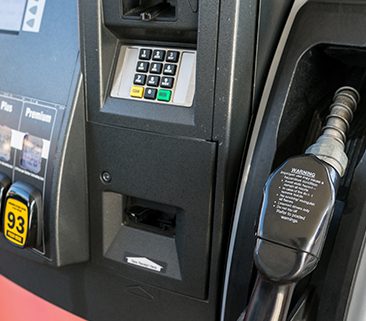Average Kansas per gallon price falls four cents to $2.30
TOPEKA – Gas prices in Kansas have fallen to their lowest level since Hurricane Harvey made landfall in Texas in late August. Kansas’ $2.30 average pump price this week is four cents lower than a week ago and down 19 cents per gallon from the $2.49 registered on Sept. 5, 2017. This is the fifth consecutive Monday with a lower average gas price in the Sunflower State.
“Now that we are clear of and recovered from the storm-related impact of oil production operations, we’re really seeing our normal autumn seasonal decline in gas prices across Kansas and the country,” said AAA Kansas spokesperson Jennifer Haugh. “Once summer vacation season is over, gasoline demand and price typically decreases. That, coupled with the less expensive winter-blend gasolines being introduced into the market, and motorists are seeing very favorable prices at the pump.”
According to AAA Kansas, this week’s Kansas gas price extremes are:
HIGH: St. Francis (Cheyenne County) – $2.70
LOW: Burrton (Harvey County) and Haven (Reno County) – $2.11
AAA Kansas reports that Wichita, with $2.26/gallon pump prices ranks as the 24th lowest metro area in the nation, while Topeka ($2.28/gallon) ranks 33rd lowest. Of the 10 Kansas cities regularly highlighted by AAA Kansas (see chart below), Salina (-7 cents), Kansas City, Kan. (-6) and Topeka (-6) saw the largest price decreases, while prices in Manhattan (+2) and Hays (+1) actually rose slightly.

National Perspective
Motorists are paying on average six cents less for a gallon of gasoline on the week with all states seeing prices at the pump either drop or hold steady. Today’s national gas price average is $2.49, which is 18 cents cheaper than a month ago. With the latest Energy Information Administration (EIA) report measuring gasoline demand at 9.2 million b/d, down 281,000 b/d from the week prior, retail gas prices are showing steady promise of returning to pre-hurricane rates.
“Across the country, gas prices have fallen steadily for the past four weeks and now we are seeing gasoline demand drop alongside prices,” said AAA Kansas’ Haugh. “The latest demand figures show the lowest since the week Hurricane Harvey hit and can likely be the beginning of a downward demand trend indicating even cheaper gas prices to come this fall.”
Over the weekend, Hurricane Nate made landfall over the Gulf Coast and is now a tropical depression. Ahead of the storm, many Gulf Coast oil platforms and rigs were shut down and employees evacuated. In addition, two refineries, accounting for six percent of total Gulf Coast refining capacity, shut down. Early reports speculate that refineries did not sustain damage and operations could start up today, Monday. Overall, motorists will see minimal to no impact to gas prices in the region hit by the storm.
Great Lakes and Central States Report
At 10 cents less than last week, Michigan ($2.40) is the region’s one state to see the largest and only double-digit drop in gas prices on the week. All states are paying less on the week. Following closely behind Michigan are Indiana (-9 cents) and Ohio (-9 cents). With a two-cent decrease, North Dakota saw the region’s smallest decline.
The region’s pump price drop comes alongside a large 1.5 million bbl drop in the Great Lakes and Central states overall gasoline inventory. According to the EIA, this was the largest inventory drop of all regions in the country. At 50 million bbl, total levels are on par with inventory last year at this time.
